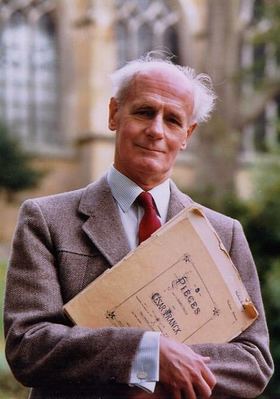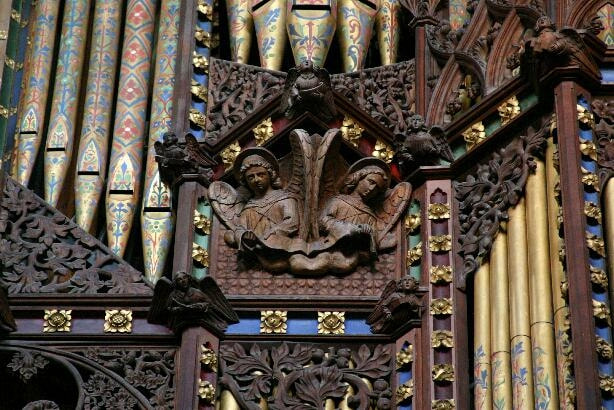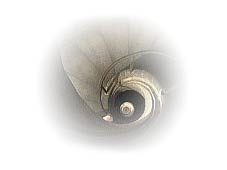David Bridgeman-Sutton recalls his all-too brief friendship with a musician whose influence reaches far beyond the shores of England.
|
“How clearly I remember that door in St Sulpice marked “Entre interdit” and the long tramp up to the Tribune des Orgues . . . Edward VII, as Prince of Wales, was a frequent visitor and presented Widor with an engraving which he had obviously ‘nicked’ from Windsor castle”.
Thus Michael Howard, organist, conductor and scholar, one-time pupil of Marcel Dupré at St Sulpice, wrote to me a few weeks before his death in 2002. Those of us who have been privileged to pass through that door and set out on the “long tramp” know exactly what an unforgettable thrill it is. The reference to King Edward VII, however, comes as a surprise. “Good old Teddy”, known for enthusiasm for horse-racing and for the oldest sport of all was not a noted lover of music, except, perhaps, that of military bands.
|
But the story came from Dupré, who had heard it from the recipient of the gift himself - his predecessor Widor. Certainly, Mass at St Sulpice, seen from the tribune with that mighty organ in full voice, is an experience like no other. No wonder Edward was “hooked”.
|
Michael’s love of the French school remained with him all his life and is well represented in a recording career extending well over half-a-century. His final project, the complete works of César Franck, recorded on the Cavaillé-Coll/Mutin instrument of Farnborough Abbey was halted by the ill-health that dogged him from youth. Some discs in the series were completed; his version of the Three Chorales was described by critics as “magisterial” – a word that, in one form or another, was often applied to his work. A few are available as CD on the Herald label.
|
Michael’s performance, as both organist and conductor owed much to the phenomenal memory that he had trained from his earliest years. This enabled him always to concentrate on the music rather than on “the dots”. It also made him a relentless critic, both of his own work and of that of others. A very short time before his death, at the age of 79, in poor health, confined to his house and nursed by his wife, Elizabeth, he expressed regret that he had never heard a particular organ. I was able to send him a recent CD. This came back by return of post with these remarks:-
|
“It seems to me that X is a rotten organist. For example the first movement of the Mendelssohn sonata is clearly marked moderato e serioso and although the opening bars are intended pro organo pleno, the first full cadence emerges in the contrapuntal working and requires change to basic flue work only, thus bringing it into proportion with the antiphonal quotes of the Chorale. But X just blazes away throughout with an ever-increasing pulse-rate until the ear becomes completely bewildered. Likewise his Finale is no more than an indefinite and noisy mess. I should like to hear this instrument in the building itself – but never want to hear this disc again!!!!"
|
It is for his work with choirs that Michael is most widely remembered. A landmark was the 1957 LP (later issued as CD on the Verus label) Music For The Feast Of Christmas. The disc brought the music of Ely cathedral, of which he was then organist, to a wide audience that had heard rumours of "the Ely sound". Unforced cantabile singing (at a time when some choirs had a regrettable tendency to hoot) was marked by great attention to balance between voices, careful phrasing and s immaculate diction. The style has since become a standard for other choirs.
Encouraged by Basil Lam and the BBC, Michael formed Cantores in Ecclesia, a group of 18 professional singers to perform in churches and concert halls. For over twenty years, they toured and were acclaimed in Europe, with a repertoire ranging from “Byrd and Palestrina to Messaien and Poulenc”. On at least one trip, they were accompanied – in both senses of the word – by a specially recommended pupil of Ralph Downes, the New Zealander, Gillian Weir. As at Ely, the Director’s specialist period – the renaissance – was well represented. He had been a pioneer in reintroducing the counter-tenor voice; the recordings have great musical and historical value.
Encouraged by Basil Lam and the BBC, Michael formed Cantores in Ecclesia, a group of 18 professional singers to perform in churches and concert halls. For over twenty years, they toured and were acclaimed in Europe, with a repertoire ranging from “Byrd and Palestrina to Messaien and Poulenc”. On at least one trip, they were accompanied – in both senses of the word – by a specially recommended pupil of Ralph Downes, the New Zealander, Gillian Weir. As at Ely, the Director’s specialist period – the renaissance – was well represented. He had been a pioneer in reintroducing the counter-tenor voice; the recordings have great musical and historical value.
|
It is for his work with choirs that Michael is most widely remembered. A landmark was the 1957 LP (later issued as CD on the Verus label) Music For The Feast Of Christmas. The disc brought the music of Ely cathedral, of which he was then organist, to a wide audience that had heard rumours of "the Ely sound". Unforced cantabile singing (at a time when some choirs had a regrettable tendency to hoot) was marked by great attention to balance between voices, careful phrasing and s immaculate diction. The style has since become a standard for other choirs.
|
Encouraged by Basil Lam and the BBC, Michael formed Cantores in Ecclesia, a group of 18 professional singers to perform in churches and concert halls. For over 20 years, they toured and were acclaimed in Europe, with a repertoire ranging from “Byrd and Palestrina to Messaien and Poulenc”. On at least one trip, they were accompanied – in both senses of the word – by a specially recommended pupil of Ralph Downes, the New Zealander, Dame Gillian Weir. As at Ely, the Director’s specialist period – the renaissance – was well represented. He had been a pioneer in reintroducing the counter-tenor voice; the recordings have great musical and historical value.
In Thine Adversaries Roar (2001 ISBN 0-85244-530 X) Michael tells the story of his life, including his fights with his personal demons, with rare candour. He expresses forthright and often controversial opinions on a wide variety of subjects with characteristic forcefulness, wit and elegance of language. In his last days, he, like Widor, looked back thankfully on “a wonderful life.”
|
Unfortunately, the page of statistics showing details of Her Majesty’s visits to www.pipelinepress.com is mislaid. There is no way of knowing if she is likely to see this page. If she should, she will be able to call off the relentless search, continued throughout her reign, for the missing engraving. It will undoubtedly be a great comfort to her that there could have been no worthier recipient than Charles-Marie Jean Albert Widor.
|
David Bridgeman-Sutton,
December 7, 2004
December 7, 2004
Credits:
- pictures 1 & 2 - with thanks to Elisabeth Howard; picture 3 Jenny Setchell






